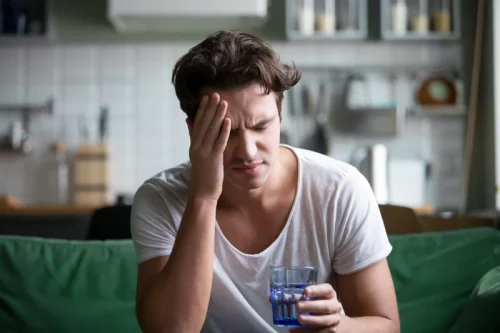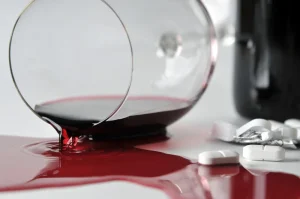
It may be easier on your rehabilitation to skip visits with “drinking buddies” or avoid gatherings with a focus on drinking. Keep a list of emergency phone numbers on hand that includes contact info for your doctor, the police, a nearby hospital, and someone you trust. Dietary guidelines recommend that if you drink, men limit daily drinking to two drinks or less per day and women limit their drinking to one drink or less per day. Consuming more than that can lead to liver damage and heart disease, and increase your risk for some cancers. The medical professional who evaluated your AWS symptoms may suggest daily follow-ups via telephone or video chat to check on your symptoms and progress. If your symptoms become more severe, it’s essential to reach out to your treatment team and seek professional help right away.
- Patients presenting with alcohol withdrawal syndrome should receive thiamine and folate supplementation as they are often nutritionally deficient.
- Because of their similar effects, benzodiazepines and alcohol are cross-tolerant—in other words, a person who is tolerant to alcohol also is tolerant to benzodiazepines.
- People at high risk of complications should enter a short-term in-patient detox program.
- Those with severe or complicated symptoms should be referred to the nearest emergency department for inpatient hospitalization.
- There are specific treatments available for anyone who wants to stop drinking—even after long-term, chronic alcohol use.
Symptoms of alcohol withdrawal
- If you or someone you know shows signs of delirium tremens, go to the emergency room immediately.
- Although ethanol is rapidly eliminated from the circulation, the time for detection by breath analysis is dependent on the amount of intake as ethanol depletes according to a linear reduction at about 0,15‰/1 h.
- Studies show support groups play an instrumental role in helping people develop healthy social networks that result in continued sobriety.
And while symptoms generally improve within 5 days, some may experience prolonged symptoms. alcohol withdrawal refers to a condition that may occur when an individual with alcohol use disorder suddenly stops or significantly reduces their alcohol consumption. A person may notice initial symptoms after a few hours that could last for up to a week or longer. Patients presenting with alcohol withdrawal syndrome should receive thiamine and folate supplementation as they are often nutritionally deficient. While you may be able to manage mild symptoms on your own or with the support of family and friends based on your doctor’s recommendations, more severe symptoms usually require medical treatment.

action: ‘healthbeat’

When https://ecosoberhouse.com/ syndrome has resolved, patients ought to be evaluated for AUD and offered treatment, if appropriate, including pharmacotherapy and behavioral treatment. Alcohol withdrawal syndrome is a clinical condition that may arise following the cessation or reduction of regular, heavy alcohol consumption. Given its spectrum of manifestations from mild to severe and potentially fatal, all healthcare team members must recognize the signs and symptoms of this condition. Timely assessment and accurate treatment are vital to preventing disease progression. Comprehensive patient care entails acute management and outpatient support in the hospital setting. In the inpatient setting, nurses perform frequent assessments that inform the treatment plan.

How is alcohol withdrawal syndrome diagnosed?
AUD is very common, affecting an estimated 76.3 million people worldwide. By reading up on alcohol withdrawal and learning more about treatment and self-help options, you’ve taken an important step toward recovery. Behavioral treatment programs are helpful for people who want to quit drinking. These programs involve working with a team of mental health professionals in a group and individual setting.
Alcohol Withdrawal Stages and Severity
- Sometimes, symptoms may be severe enough to require medical treatment at a hospital or rehabilitation facility.
- If you have alcohol use disorder and want help, a healthcare provider can guide you to resources and rehabilitation programs to help you quit.
- This article briefly reviews the mechanisms, clinical features, and management of AW.
- For this reason, there have been many attempts to classify symptoms of AWS either by severity or time of onset to facilitate prediction and outcome.
For people who experience hallucinations as part of alcohol withdrawal, these may begin in the 12- to 24-hour time frame. During the 12- to 24-hour time frame after the last drink, most people will begin to have noticeable symptoms. These may still be mild, or the existing symptoms might increase in severity. There is no exact timeline for alcohol withdrawal, and individual factors, such as the level of dependence on alcohol, will influence it. You don’t need to be diagnosed with alcohol use disorder in order to quit drinking.
What is considered 1 drink?

